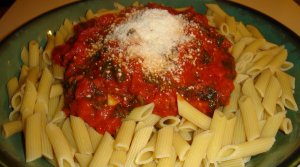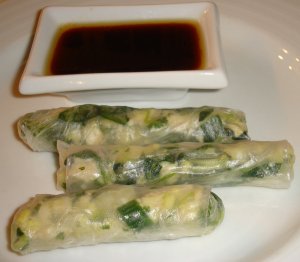Brooklyn Brewery’s Black Chocolate Stout is hands-down one of the best seasonal beers that I have ever tasted. Crafted from a special blend of roasted malts, the stout is pleasantly bitter with a dark chocolate undertone that feels luscious in the mouth. This is also very good looking beer. Poured into a tall glass, Black Chocolate Stout is extremely dark, like Coca-Cola, and forms several inches of a thick, foamy head that quickly settles into the beer. I suggest that you track down some for yourself before the winter season is over. A word of caution- at 10.1% alcohol, this stout can pack quite a punch so pace yourself. Click this post’s title to view Brooklyn Brewery’s website.
After knocking back a few bottles, I became so enamored with Black Chocolate Stout that I used it to braise some beautiful beef short ribs that I had picked up from the grocery over the weekend. The results were outstanding. Of course, you can substitute any dark beer in this recipe but you will miss out on the subtle interplay between the stout’s bittersweet black chocolate flavor and the smokiness of the ancho chile powder that seasons the braising liquid. These shorts ribs are incredibly rich and perfect for dinner on a snowy evening.
CHOCOLATE STOUT BRAISED BEEF SHORT RIBS WITH HONEY BABY TURNIPS
For the short ribs:
4 pounds beef short ribs, cut into 2 inch pieces
1 teaspoon black pepper
1/2 teaspoon kosher salt
2 teaspoons vegetable oil
1 pound frozen pearl onions (do not thaw)
4 garlic cloves, crushed
1 bottle Brooklyn Brewery Black Chocolate Stout or other dark beer
1 tablespoon ancho chile powder
2 teaspoons dried thyme
1 bay leaf
2-3 cups low sodium beef stock
Preheat oven to 375 degrees.
Heat oil in heavy 12″ skillet over medium high heat.
Season ribs on all sides with pepper and salt.
Sear ribs on all sides. Remove ribs to a roasting pan big enough to hold them in one layer. Make sure to place ribs bone side up in the pan.
Lower heat to medium. Drain the excess fat from the skillet so that almost none is left.
Add the frozen pearl onions and the garlic to the skillet. Saute for a couple of minutes. Stir frequently to avoid burning the garlic.
Deglaze the skillet with the beer and bring to a quick boil. As the beer comes up to a boil, scrape up any brown bits.
Add the chile powder, thyme and bay leaf.
Pour the onion and beer mixture over the short ribs.
Add enough beef stock to just cover the ribs.
Cover the roasting pan tightly with aluminum foil.
Braise the ribs in the oven for three hours.
When the ribs are done braising, use tongs to remove the ribs to a warm platter or bowl. Cover with the foil used for the roasting pan to keep the ribs warm while you prepare the sauce.
Discard the bay leaf.
Place the roasting pan on the stove over high heat and boil the sauce until it reduces by at least half, about ten minutes. Stir the sauce frequently to avoid burning the onions. If you would like a thicker sauce, boil it longer until you reach the desired consistency.
At this point, you may remove the bones from the ribs- they should fall off quite easily. Or, you may serve the ribs with the bone. It’s up to you.
Pour the sauce over the ribs and serve immediately.
For the turnips:
1 1/2 pounds baby turnips
2 tablespoons unsalted butter
2 teaspoons honey
3/4 cup low sodium chicken broth
1/4 teaspoon salt
Peel the baby turnips and cut into halves or quarters, depending on the size.
Melt the butter in a small saucepan over medium heat. Add the honey and stir well.
Add the turnips and stir to coat each turnip with the melted butter and honey.
Add the broth and salt.
Bring to a boil then reduce heat to low and cover. Simmer until the turnips are just fork tender, about 25 minutes.
Remove the lid and quickly boil off any remaining liquid. The turnips will brown a little bit but make sure to stir a few times to avoid burning.
Using the back of a spoon, gently mash a few of the turnips. Leave some whole.
Spoon into a bowl and serve immediately with the short ribs.
Serves 4.






